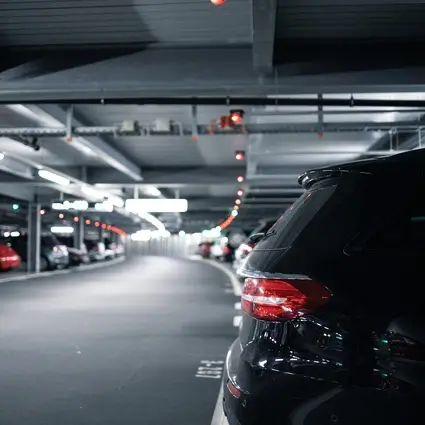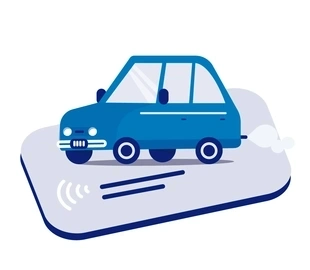
“Electric vehicles are here to stay. It’s currently the only real, viable option in transit infrastructure and I can’t see anything that’s going to stop the growth. If we’re to meet our energy goals, we need to ween ourselves off our reliance on fossil fuels and the internal combustion engine.”
So says Russell Green, Head of Emerging Verticals at Elavon Europe and an expert on payments in the mass-transit industry.
“The car industry, as a whole, is involved in solving this issue. Vehicle manufacturers and petrochemical firms are working with and investing in battery and technology firms, to continue to grow this area.”
In the UK, ownership of electric vehicles (EVs for brevity!) remains relatively low, at about 3% of the total. By the end of 2023, there were an estimated 864,000 zero-emission cars on UK roads, out of a total of 33.5 million cars, according to the Department for Transport (DfT). Meanwhile, 1.2% of the almost five million large-goods vehicles (LGVs) and 2.1% of all buses and coaches are classed as zero-emission vehicles.
But it’s changing. Businesses are investing heavily in EV for their fleet of vehicles, whether that’s company cars or delivery vans for firms such as Amazon or the Royal Mail.
There were 86,000 new zero-emission cars registered in the UK in 2023, an increase of 42% on the previous year. Similarly, there was an increase of 55% of zero-emission LGVs in the same period.
That investment has a knock-on effect. “Most of the EVs produced in the last several years are reserved for fleet use. There’s residual demand and that keeps prices high – and that puts off private buyers,” says Green.
“But it won’t stay like that forever. Competition will see car companies offering low-cost entry vehicles to meet demand for sustainability and reliability and are easy to use. The EV market will not always be dominated by premium SUVs.”
The AA said there is a perception among drivers that there are not enough charging points, putting off potential owners from buying an EV. But that too is changing.
There are already almost 50% more charge points in 2024 than there were in early 2023. And the network continues to grow with the Government making £185m available to help local authorities install chargepoints.
How do drivers pay to charge?
If you’re just using a car to get to and from work, or perhaps the supermarket for the weekend’s big shop, then you can probably make do with a slow, overnight charge at home – possibly with a top-up at work.
And according to the UK’s DfT, that’s what most drivers do.
“What if you want to go further afield: a mini break to the coast or a visit to relatives?” Green continues. “That worry over the ‘last mile’ – where and how you’re going to charge your vehicle when you’re 200 miles from home – is a real stumbling block.
“Buyers are still concerned about the reliability and coverage of the charging network, which was recently highlighted in Automotive News Europe.”
So, what are the steps leading up to paying for your charge?
Find a compatible chargepoint: not all EV vehicles take the same adaptor, so you’ve got to find one that suits your vehicle. You need local knowledge or a map, which will (probably) mean using an app. Which means you also need network for your phone.
Fast or slow charging: if the driver is happy to park for a long time, to go shopping or spend a night in a hotel, a slow charger is fine. A fast charger is preferable for day to day, and even that is likely to take at least ten minutes.
Work out how to pay: is it by app? In which case, you’ll need to download one of a growing number in the UK. If you can pay at the charging point, do you need a dedicated payment card (closed-loop system) or can you use your credit card (open loop)?
“People are used to being able to drive into a filling station, top up their car with petrol or diesel, grab a snack for the journey, pay up and be on their way in a matter of minutes,” says Green.
“Then consider if you’re travelling across Europe. The plethora of languages, applications, fee packages and currencies add to a confusing landscape for the customer.”
These pain points for the driver need solutions, which provide opportunities for business.
Pain points for payments
Green outlines the pain points for the businesses working to establish an improved charging network.
“The biggest problem for the corporate world at the moment is uncertainty,” he explains. “If you’re running a traditional fuel station on a main transit hub, you’ve got to think about the physical changes needed to support the grid, the space required, battery storage and charger solution, which are all new experiences.
“Often as an afterthought, they then think: how do customers pay? Which payment solution should be used, or do we want a mobile payment app? Am I offering the right kind of solution to customers? How will I be able to create customer loyalty?
“These are the kinds of considerations our customers are facing at the moment and we’re helping simplify those choices.”
Creating a unified charging network is a problem – and an opportunity – for the larger firms with capital and/or real estate.
Opportunities for small businesses
The growth in EVs also provides opportunities for much smaller businesses. Hotels, for instance, are likely to have parking and therefore space to install at least one charging station.
But even cafés, bars and restaurants can capitalise on this trend. There is currently a certain cachet in owning an electric car, particularly the higher end models.
“It’s a differentiator. Hotels and restaurants, all these kinds of places, want to attract people and those with an electric car are often more affluent,” says Green.
“If you want to attract affluent clientele, having a charging station is a great way to do that. And you mitigate much of that fear over the ‘last mile’ range anxiety.”
If your business is thinking about installing an EV charging station, you need to think about the customer journey and how people are going to pay.
Do you want your customers to come inside and maybe pick up a pint of milk, too? Do your customers actually want to interact with a person, or would they rather pay at an unattended terminal that’s integrated with the charge point? Do you want to be able to connect paying for a recharge with your hotel’s billing system?
Or possibly (and this will keep all your customers happy): do you want to be able to offer something for everyone?
Each payment option presents its own unique challenges, with differing security requirements, technology and partners. You need to take guidance from a credible payments provider to establish what you want and need for your customers, so you can grow your business in the process.
Talk to us to find out more about what we can offer.








